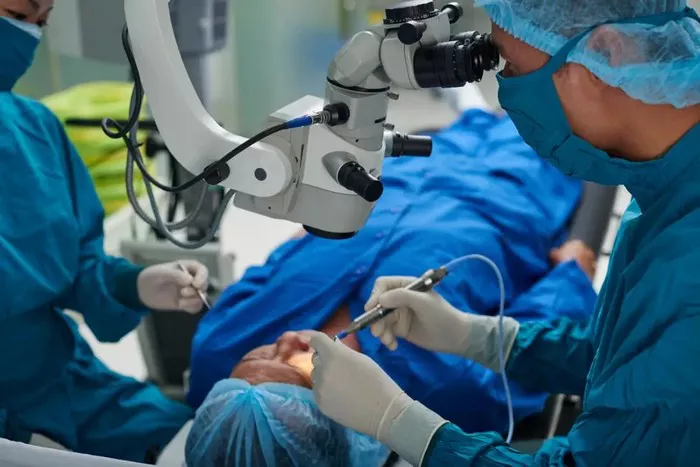Thyroid autoimmune diseases, such as Graves disease, are intricately connected to thyroid eye disease. The prevailing belief is that antibodies play a direct role in affecting orbit tissues, leading to lymphocyte infiltration, increased fibroblast activity, and the deposition of glycosaminoglycans within the structural elements of the orbit.
Dr. Debraj Shome, Senior Cosmetic Surgeon, and Director at The Esthetic Clinics provides comprehensive insights into orbital decompression surgery for thyroid eye disease, emphasizing the critical need for timely intervention.
Orbital decompression surgery involves the meticulous removal or thinning of orbital walls and orbital fat. This process aims to increase the orbit’s volume, accommodating abnormally enlarged muscles and tissues. Beyond functional and aesthetic considerations, decompression is performed based on the degree of proptosis, intending to relieve pressure on the eyes caused by inflammation and swelling of orbital tissues.
The surgery entails the removal of bone from the orbit, creating space for swollen tissues, thereby reducing pressure on the optic nerve and allowing the eyes to return to a more normal position. Notably, orbital decompression surgery goes beyond improving visual function; it also addresses aesthetic concerns associated with thyroid eye disease by reducing proptosis.
Recent advancements in surgical techniques have facilitated personalized approaches, yielding better outcomes and minimizing risks. In essence, orbital decompression surgery represents a significant leap forward in tackling the complexities of thyroid eye disease, focusing on both functional and cosmetic aspects to enhance patients’ quality of life.
This surgery is deemed appropriate for individuals with distressing protuberant eyes that can impact social interaction. Conditions beyond thyroid-associated orbitopathy, where cosmetic orbital decompression can be applied, include congenital shallow orbits, congenital hypoplasia of malar eminence, enlarged globe from high myopia, enlarged globe from buphthalmos, and asymmetric globes secondary to trauma.
The benefits of orbital decompression surgery, also known as orbital blowout surgery, are manifold. It offers improved visual function by creating space within the orbit, alleviating pressure on the optic nerve, and potentially restoring or preserving vision. The transformative impact on appearance enhances self-esteem and confidence by reducing eye prominence and restoring normal eye alignment.
Beyond cosmetic benefits, this surgery alleviates physical discomfort associated with thyroid eye disease, providing relief from symptoms such as dry eyes, irritation, double vision, and difficulty closing eyelids. The personalized approach minimizes potential complications, instilling reassurance among individuals considering this transformative procedure.
In highlighting the innovative aspects of orbital decompression surgery, its role as a game-changer in restoring both physical comfort and emotional well-being for patients grappling with thyroid eye disease becomes evident.


